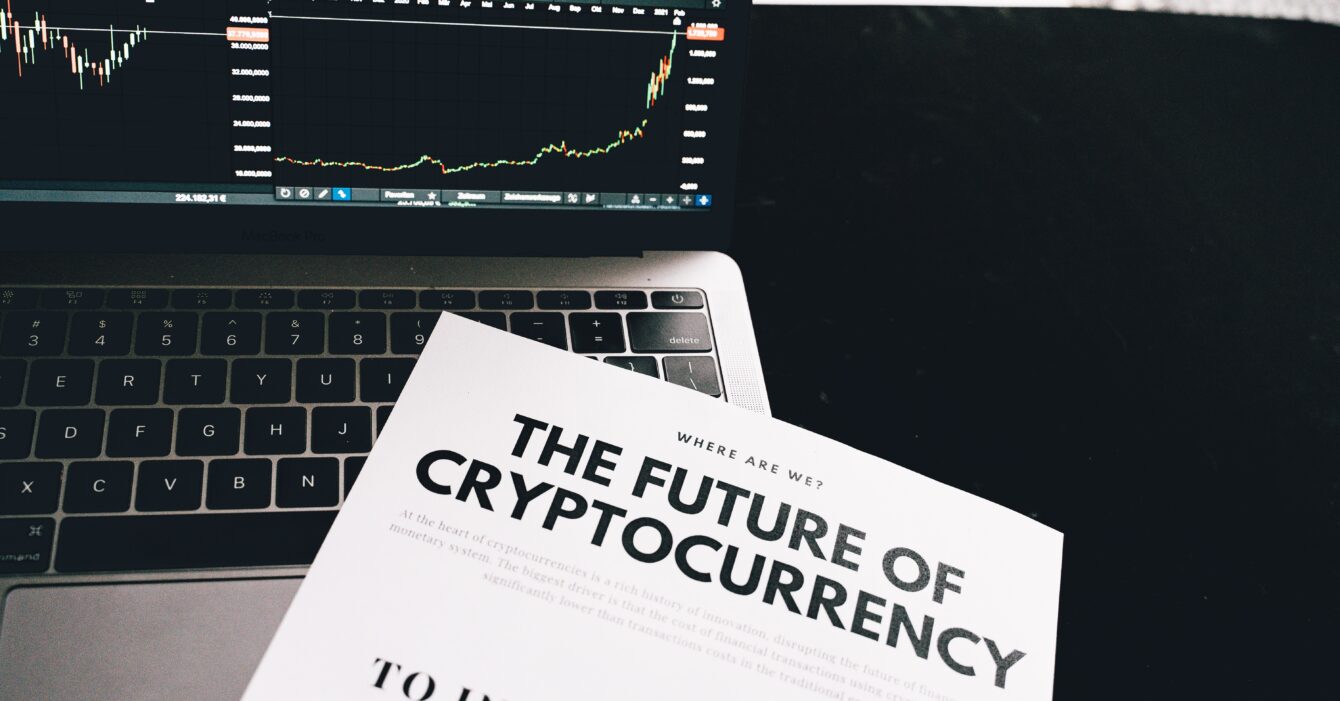What Happens to Bitcoin Once All 21 Million Have Been Mined?
Bitcoin’s limited supply is one of its most distinguishing features. Banks can produce any amount of money they choose, even fiat currencies because they have an endless supply.
Satoshi Nakamoto, the creator of bitcoin, set the limit at 21 million, implying that there would only ever be 21 million bitcoins in existence. These bitcoins are added to the Bitcoin supply at a set pace of one block every 10 minutes on average. Furthermore, every four years, the number of bitcoins issued in each of the aforementioned blocks is cut by half. By August 2021, there were 18.7 million bitcoins available, leaving around 2.3 million to be mined. The supply constraint makes Bitcoin rare and prevents inflation from developing from a limitless supply.
The economics of Bitcoin will change as it approaches its supply limit. Different participants of its ecosystem, like miners and traders, will alter. Miners, for example, may depend on transaction fees rather than block rewards to generate income and profit. The network of the cryptocurrency will also alter, and its participants will be distinct from the retail traders who currently occupy its ecosystem.
Whereas, given the cryptocurrency’s still-developing ecosystem, it’s tough to tell with precision what impact Bitcoin’s finite supply will have.
In total, only 21 million bitcoins may be mined. Due to the total usage of rounding operators in its software, Bitcoin will never approach that limit. Since around August 2021, 18.77 million Bitcoins had been mined, leaving around 2.3 million to enter circulation. Once Bitcoin reaches its supply limit, block rewards will cease to exist, and miners will rely on fees from transactions on the cryptocurrency’s network to generate revenue. The Bitcoin network may expand from its current incomplete form to become a monetary transaction and trading bridge. In the financial environment, Bitcoin will have a unique identity.
Will Bitcoin’s 21 million limits be reached?
Before digging into the consequences of Bitcoin’s 21 million ceilings, ponder whether it will ever hit that level. According to some analysts, Bitcoin may fall slightly short of the 21 million thresholds based on the cryptocurrency’s existing coding and mining method.
To summarize, miners “mine” Bitcoin by solving cryptographic puzzles in order to verify and validate a block of transactions on the network. Miners that successfully confirm a transaction block receive block rewards, which are a specified quantity of bitcoins. Every four years, the rewards are cut in half.
The reward for verifying a block of transactions was 50 bitcoins when the cryptocurrency was first introduced. It was cut in half to 25 bitcoins in 2012, and it was reduced to 12.5 bitcoins in 2016. Miners stand to earn 6.25 bitcoin for each new block in May 2020. Until the final bitcoin is produced, block incentives for Bitcoin miners will be half every four years. According to current projections, the final bitcoin will be mined in February 2140.
The Bitcoin mining process rewards miners with bitcoin, but the size of the payout reduces periodically to regulate the circulation of new tokens.
What Happens If All Bitcoins Are Mined?
As a result of Bitcoin failing to reach its expected cap, there is a chance that the cryptocurrency’s network may continue to function for a long time after 2140. There will be no bitcoins generated, but transaction blocks will be verified, and fees will become the major source of revenue. Eventually, the Bitcoin network may operate as a closed economy, with transaction fees imposed similarly to taxes.
Is it possible to receive prizes in satoshis rather than bitcoin? This is a highly unusual circumstance that would require an alteration in the cryptocurrency’s system.
However, it is impossible to foresee the consequences of Bitcoin nearly reaching the total amount predicted by Satoshi Nakamoto. This is due in part to the fact that the Bitcoin ecosystem is still in its early stages. The cryptocurrency was designed to be a means for trade, but it has gained appeal as a store of value, an investment asset rather than a medium of exchange. Between now and 2140, it is feasible that Bitcoin’s ecosystem and workings may experience a transformation comparable to the one that has occurred in its identity.
Even though there is only ever a maximum of 21 million bitcoins, the actual number of bitcoins in circulation might be millions less since people have misplaced their private keys or died without giving their private key instructions to anybody.
By illustration, a protocol update in the cryptocurrency’s blockchain might lead to the generation of more than 21 million bitcoins. Keep in mind that Bitcoin is an open-source cryptocurrency that may be modified to create hard or soft forks that generate new cryptocurrencies or modify their functionality. Bitcoin Cash (BCHUSD), litecoin (LTCUSD), and dogecoin (DOGEUSD) are three examples of the past, which have made small changes to Bitcoin’s source code and generated new coins with market prices in the billions of dollars.
The Impact on Bitcoin Miners
In the current system, block rewards and transaction fees are the most important sources of revenue for miners. Though miners may sell their rewards stash in cryptocurrency marketplaces, high bitcoin prices let them pay operational costs and maintain corporate profitability.
Once Bitcoin approaches its limit, the reward levels may not be sufficient to pay miners’ operating costs, much nowhere to generate profits. Bitcoin rewards are expected to cease if and when the supply limit is met.
Transaction fees are likely to fill up the gap in both cases. The amount and mechanism for these fees are determined by the condition of the Bitcoin network at the present time, i.e., whether it has been utilized as a medium of exchange or a store of value. The previous scenario may impose appropriate costs to support Bitcoin’s use in daily transactions, but the latter may result in miners doing fewer and more costly transactions.
Some other hypothesis is that miners will create cartels. They may be able to regulate supply in order to form high transaction fees or a charge amount that ensures them a minimum profit margin. Another alternative is selfish mining. Miners collaborate amongst themselves in this method of mining to hide new blocks and release orphan blocks that have not been verified by Bitcoin’s network. This method will extend the development of the final block in Bitcoin’s network while ensuring substantial rewards for new blocks when they are finally placed into the network.
Other commodities with restricted or controlled supply already have such groupings. For example, OPEC’s production output has a significant impact on oil prices. A cartel run by mining titan DeBeers is said to determine diamond prices as well. 4
The Impact on the Bitcoin Network
The network is the most significant and beneficial feature of Bitcoin. Distributed ledger technology (DLT) is a technical solution to the time-consuming bookkeeping and accounting that defines the majority of financial transactions.
The transaction of Bitcoin volumes will skyrocket if it becomes widespread as a medium of exchange in the future. The previous history has revealed that there is a big possibility that the network may slow down. This is due to the design of Bitcoin, which depends on a distributed database to store copies of huge ledgers, which trades speed for accuracy and integrity.
In such a situation, Layer 2 technologies, such as the Lightning Network, are likely to become responsible for validating the bulk of transactions on their network. As a result, the real network of the cryptocurrency will only be used to settle mass quantities of transactions.
Another possibility is that the quantity of transactions on the Bitcoin network decreases. When Bitcoin becomes a reserve asset, such a scenario is feasible. There will be few bitcoin trades. Retail traders and small trading businesses, which now dominate the trading environment, will be wiped out, and huge institutional players and established trading entities will take their place. They’ll do fewer, more costly deals, which will cost them a lot of money in transaction fees from miners.
The Impact of Bitcoin the Cryptocurrency
Satoshi Nakamoto, the cryptocurrency’s creator, intended it to operate as a means of exchange for daily transactions. However, its network charges substantial transaction fees and has long processing times. Meanwhile, speculative investors are drawn to its scarcity and rising prices. Their bitcoin roulette bets have resulted in dramatic price fluctuations, scaring serious investors away from the asset class. Its ecosystem has been characterized by regulators as being comparable to the Wild West.
Bitcoin may have a more defined identity by the time the last bitcoin is mined (or near to being mined) than it does now. Alternatively, such as those who used the Lightning Network, may have boosted the transaction of the network processing speed and allowed it to be used as a medium of exchange. Some governments, such as El Salvador, have made cryptocurrencies legal tender in advance of such a scenario.
El Salvador legalized Bitcoin on June 9, 2021. It is the first country in the world to have done so. Any business that accepts bitcoin can use it for any transaction. The major currency of El Salvador is the US dollar.
The latest significant events in the United States are the Office of the Comptroller of the Currency (OCC) letter in January 2021 authorizing the use of crypto as a method of payment, the introduction of Bitcoin by PayPal Holdings, Inc. (PYPL), and Tesla, Inc. (TSLA) accepting Bitcoin to purchase Tesla cars and solar roofs. In May 2021, Tesla confirmed that it will no longer take Bitcoin due to environmental worries about the energy required for Bitcoin mining.
The rising scarcity of bitcoin’s numbers will have pushed up its price, as well as the value of cryptocurrency marketplaces. When large sums of capital flow into an asset class, regulators prefer to respond swiftly, and crypto markets and Bitcoin will probably have fallen under the regulatory cover as well. That will be a signal for institutional investors to enter the cryptocurrency ecosystem and provide massive liquidity to help calm price movements.
In conclusion
The 21 million supply cap on Bitcoin is intended to manage inflation that would otherwise occur from an unlimited supply. However, by making bitcoin a rare commodity, it has increased its value.
When Bitcoin approaches its supply limit, miners will most likely move their primary source of revenue from block rewards to transaction fees. With the development of side channels like the Lightning Network, Bitcoin’s blockchain may be limited to validating mass quantities of transactions or those involving the movement of considerable amounts of bitcoin from one address on its blockchain to another. The character of Bitcoin as a store of value and a medium of exchange will be more clearly defined than it is now.
Nevertheless, none of these forecasts are fixed in stone. It is impossible to precisely anticipate Bitcoin’s future due to the rapid speed of growth in its ecosystem. For instance, the protocol of the cryptocurrency may be altered to allow for the production of more than 21 million bitcoins.
Frequently Asked Questions
What is the total supply of Bitcoin?
The total number of bitcoins available is limited to 21 million.
What happens to miner fees after Bitcoin’s supply limit is reached?
Miners will rely on transaction fees for revenue after the Bitcoin supply hits 21 million, rather than block rewards, which will have disappeared by then.
What happens to the Bitcoin network when it hits its supply limit?
Once Bitcoin reaches its supply limit of 21 million, it is probable that side channels, like the Lightning Network, would undertake the majority of the tough job in validating transactions. Only very large batches of transactions or those involving the transfer of substantial volumes of bitcoin from one address to another are confirmed by the cryptocurrency’s blockchain.
What happens if the Bitcoin supply does not reach the 21 million limit?
The inability of Bitcoin to hit its planned limit has the unfortunate result of affecting the probability that the cryptocurrency’s network will continue to function until 2140. The rewards for confirming these blocks will be small, in line with Bitcoin’s economics.
Are you ready to dive into cryptocurrencies?
Join us for more updates: Facebook | Telegram | Linkedin
MX Global– Built in Malaysia for Malaysians
DISCLAIMER:
Any opinions, news, research, analyses, prices, or other information discussed in this presentation or linked to from this presentation are provided as general market commentary and do not constitute investment advice.
MX Global Team does not accept liability for any loss or damage, including without limitation to, any loss of profit, which may arise directly or indirectly from the use of or reliance on such information.





